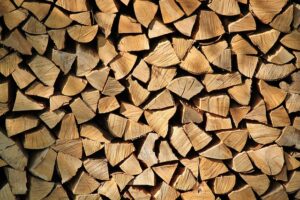OSHA establishes safety guidelines for industrial settings, emphasizing hazard protection, especially from extreme temperatures. When selecting heating equipment for manufacturing facilities or warehouses, options include gas-fired, electric, and suspended heaters with forced air systems. Choosing industrial unit heaters with the right BTU ratings ensures both safety and performance standards, as per OSHA requirements, fostering secure and productive work environments. Regular maintenance is vital for optimal performance and safety, aligning with OSHA regulations for gas-fired and electric heaters, especially in demanding industrial applications.
“In the realm of industrial safety, adhering to OSHA standards is paramount. This article explores how industrial unit heaters can meet these stringent requirements while enhancing efficiency. We delve into the critical aspects of OSHA guidelines for industrial settings, focusing on heating systems. By examining key features and technologies, we uncover efficient industrial unit heaters that prioritize both performance and worker safety. Additionally, we discuss material considerations, maintenance practices, and best practices to ensure compliance with OSHA regulations.”
- Understanding OSHA Standards for Industrial Safety
- Key Features of Efficient Industrial Unit Heaters
- Compliance with OSHA Regulations: Heat Source and Distribution
- Material Safety and Health Considerations in Heating Systems
- Regular Maintenance for Optimal Performance and Safety
Understanding OSHA Standards for Industrial Safety

OSHA (Occupational Safety and Health Administration) sets forth comprehensive guidelines to ensure workplace safety, especially in industrial settings. These standards are crucial for protecting workers from potential hazards, including extreme temperatures. When it comes to industrial unit heaters, compliance with OSHA regulations is not just a legal requirement but also ensures the well-being of employees working in various industries.
In manufacturing facilities and warehouses, where heavy-duty construction and commercial heating demands are high, selecting appropriate heating equipment is essential. Gas fired heaters, electric unit heaters, or suspended heaters with forced air heating mechanisms can cater to these needs. Each option has its advantages, and understanding OSHA’s perspective on BTU ratings and efficient design ensures that the chosen industrial unit heater meets both safety and performance standards for a secure and productive working environment.
Key Features of Efficient Industrial Unit Heaters

Industrial unit heaters designed for efficiency and safety are crucial for maintaining optimal temperatures in warehouse heating and manufacturing facilities. Key features such as heavy-duty construction ensures longevity, even under strenuous conditions. Gas fired heaters, electric unit heaters, and suspended heaters offer versatile solutions tailored to diverse industrial applications.
These heaters incorporate advanced technologies like forced air heating systems, which enhance heat distribution and maximize energy transfer, thereby improving overall efficiency. BTU ratings, a measure of thermal output, help users select heaters suitable for their space requirements. Commercial heating needs in various industrial settings demand reliable, safe, and cost-effective solutions—features that top-tier industrial unit heaters consistently deliver.
Compliance with OSHA Regulations: Heat Source and Distribution

Industrial unit heaters designed for warehouse heating and manufacturing facilities must adhere to strict OSHA safety guidelines. Heat source and distribution play a pivotal role in ensuring compliance. Gas fired heaters, for instance, are popular choices due to their high BTU ratings, capable of providing ample heat for even the most demanding industrial applications. Electric unit heaters also offer efficient heating solutions, especially in areas requiring precise temperature control.
Suspended heaters and forced air heating systems further enhance safety and efficiency in heavy duty construction sites and commercial heating needs. Proper distribution ensures that hot air reaches every corner, eliminating cold spots and improving overall working conditions. This not only meets OSHA standards but also contributes to increased productivity by creating a comfortable work environment for employees.
Material Safety and Health Considerations in Heating Systems

When it comes to industrial unit heaters, safety and efficiency go hand in hand. Material Safety and Health Administration (MSHA) standards require that heating systems used in warehouse heating or manufacturing facilities be designed with worker safety at the forefront. This includes careful consideration of materials used, proper ventilation, and adherence to heavy duty construction standards to prevent accidents.
In industrial applications, gas fired heaters and electric unit heaters are popular choices for commercial heating due to their high BTU ratings and ability to provide forced air heating efficiently. However, suspended heaters must be installed and maintained correctly to avoid falls or electrical hazards. By understanding these safety considerations, facilities can ensure that their heating systems not only meet OSHA standards but also contribute to a safer work environment in manufacturing and other heavy duty construction settings.
Regular Maintenance for Optimal Performance and Safety

Regular maintenance is key to ensuring optimal performance and safety when it comes to industrial unit heaters. These heavy-duty machines, designed for demanding environments like manufacturing facilities and warehouses, require routine care to maintain efficiency and prevent costly breakdowns. A well-maintained heater not only enhances operational effectiveness but also contributes to a safer working environment, aligning with OSHA standards.
For gas fired heaters and electric unit heaters alike, regular inspections, cleaning, and adjustments are crucial. Suspended heaters in particular need careful attention due to their elevated positions. Forced air heating systems should be evaluated for airflow obstructions, while BTU ratings play a vital role in determining adequate heat output for the space. In industrial applications, where commercial heating demands are high, proactive maintenance can significantly extend equipment life and optimize energy usage.
When selecting and implementing industrial unit heaters, adhering to OSHA safety standards is paramount. By understanding these regulations, prioritizing efficient design features like heat source and distribution, and maintaining proper material safety practices, businesses can ensure their heating systems meet both performance and safety criteria. Regular maintenance further optimizes these industrial unit heaters, making them indispensable assets for any operation requiring consistent, safe warmth.












